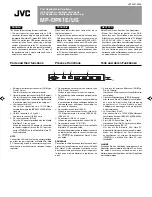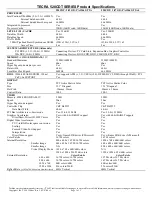
201
Glossary
5.375 x 8.375 ver 2.3.2
serial
— Processes that occur one at a time. In communications, it
means the transmission of one bit at a time sequentially over a
single channel. Most computers have a serial port, which
provides a serial interface between the computer and a single
device, and/or a USB port which provides a high-speed
connection to multiple devices. See
Universal Serial Bus (USB)
.
Compare
parallel.
shortcut
— See
keyboard shortcut
.
software
— See
program.
Compare
hardware.
Standby
— A feature of some Windows
®
operating systems that
allows you to turn off the computer without exiting your open
applications and to continue from where you left off when you
turn the computer on again.
Suspend
— A feature of some Windows
®
operating systems that
allows you to turn off the computer without exiting your open
applications and to continue from where you left off when you
turn the computer on again.
system disk
— A diskette that contains the operating system files
needed to start the computer. Any diskette can be formatted as a
system disk. A system disk is also called a “bootable disk” or a
“startup disk.” Compare
non-system disk.
system prompt
— The symbol (in the MS-DOS
®
operating system,
generally a drive letter followed by a “greater than” sign)
indicating where you enter commands.
T
TFT display
— See
active-matrix display
.
U
universal serial bus (USB)
2.0
— USB 2.0 is a serial bus that
supports a data transfer rate of up to 480 Mbps (480 million bits
per second). USB can connect up to 127 peripheral devices
through a single all-purpose USB port. USB allows hot swapping
of peripherals. See also
bus, hot swapping, serial.
upload
— To send a file to another computer through a modem or
network. See also
download
.
USB
— See
universal serial bus (USB) 2.0.
Summary of Contents for 2010
Page 186: ...186 5 375 x 8 375 ver 2 3 2 Blank Page ...
Page 212: ...212 5 375 x 8 375 ver 2 3 2 ...












































